
7 minute read
TRAVELOGUE—Mexico’s Street Foods
Masa-based foods cooking on a comal Esquites

EXPLORING THE STREET FOODS OF MEXICO
EDITOR’S NOTE: A few months ago, I read about a tour that took visitors on a culinary journey to explore the street foods of Puebla. Since el Restaurante contributing writer Joseph Sorrentino is our resident writer in Mexico, I tapped him to explore the topic by taking his own personally designed tour. Here, he shares a “menu” of his discoveries from Chipilo, Atlixco, San Pedro Cholula and Santa Maria Tonantzintla, all in the state of Puebla; San Gregorio Atlapulco and Santa Cruz Acalpixca in Xochimilco; and Villa Milpa Alta in Milpa Alta. (Xochimilco and Milpa Alta are municipios or boroughs of Mexico City).
| BY JOSEPH SORRENTINO, writing from Mexico | I avoided street food during my first couple of trips to Mexico mainly because whenever I was heading there, some friend would inevitably tell me a horror story about what happened to them or someone they knew when they ate food sold on the street. I took their warnings to heart. What a mistake. I missed out on a lot. People across Mexico sell food from baskets attached to their bicycles, carts, small stands, taquerías, and holein-the-wall restaurants. Street food is really just home-made food that’s extremely inexpensive and very tasty. Many items served in Antojitos Mexicanos (tiny restaurants, someone’s front room or a large tent) typically are cooked on a comal, a large metal griddle and start with a cook taking a handful of masa, passing it through a tortilla press to flatten it and then shaping it into circles, ovals or other shapes depending on what’s been ordered.
There’s an almost infinite variety of street food options, and each location has its own take on Mexican favorites. I and a companion ate at 20 different locations and, happily, have no horror stories to regale you with. Here’s some of what we enjoyed:
MAIN MEALS
TAMALES In the early morning, heavy three-wheeled bicycles loaded with silver containers jammed with tamales appear on corners in virtually every Mexican city and pueblo. Most stands offer several types, including rajas (queso fresco, and strips of chiles, typically poblanos, that have been cooked with tomatoes); dulce (a sweet, red tamale made with strawberries, raisins and vanilla); mole (some type of mole, chipotle and pork); verde (tomatillos, cilantro, chile, pork or chicken). Although tamales may be eaten any time, they’re typically sold as a breakfast food on the street and carts disappear by mid-morning.
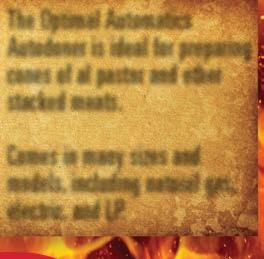
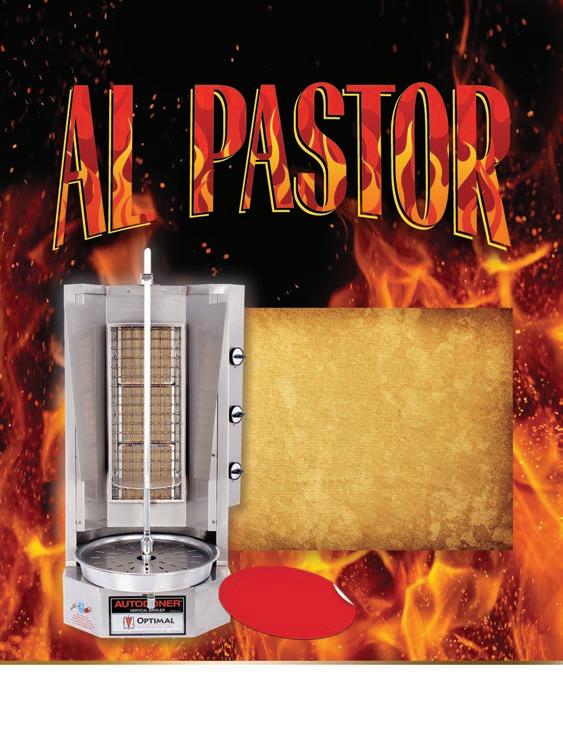
TACOS They’re sold from bikes, stands and in taquerías…and if you hear someone calling out “Tacos... tacos de la canasta,” head on over. In Cholula, these are often small tacos sold from a basket attached to a bike. They can be filled with meat, beans or potatoes and topped with salsa. An order is four tacos and since they’re small and tasty, two orders may be required. Other types include tacos dorados, tacos that have been fried to a crispy, golden brown, and tacos camioneros, soft tacos piled high with meat, onions, peppers and french fries. One order will almost certainly suffice. At outside taquerías, you’ll often find marinated pork cooking on a trompo, a vertical rotisserie. The pork is layered on the trompo, slow-cooked, and then thinly sliced to make tacos al pastor, or taco árabes. Both are made with pork cooked on a trompo but the marinades differ. TLACOYOS These are traditionally oblong or triangular. Refritos, cheese or mashed potatoes are added to the masa, which is worked slightly and then shaped. Surprisingly, I’ve never seen a tlacoyo filled with any kind of meat. Once cooked, they’re often topped with nopales and grated cojita. QUESADILLAS You can order these large tortillas filled with whatever your heart desires. Be sure to ask for quesillo (queso Oaxaca)—you won’t regret it. A popular quesadilla in Milpa Alta is filled with seso (brains), onions, jalapeños and epazote (that one isn’t cooked on a comal—it’s deep-fried). GORDITAS In Mexico City, gorditas are usually large, thick and round. Cooks slice these in half and stuff them with the customer’s choice of fillings. Chicharron is added whether you’ve asked for it or not. But in Puebla, gorditas look like quesadillas that have been filled with refritos. MOLOTES A cross between fried dough and a calzone, molotes are found mainly in Puebla. The ones I ate were made from dough that’s a mix of flour and corn and pressed until paper-thin. A generous amount of filling is added, along with thin slices of jalapeño and some epazote. The dough is folded over and deep-fried resulting in a surprisingly soft molote. TORTAS On my second trip to Mexico—way back in 1999—I spied a stand advertising tortas. My Spanish wasn’t very good—in fact, it was almost non-existent—and I figured a torta was a small tortilla.
Tlacoyo The Optimal Automatics Autodoner is ideal for preparing cones of al pastor and other stacked meats. Comes in many sizes and models, including natural gas, electric, and LP.
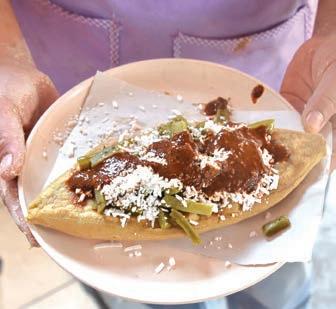
Se habla espanolSe habla espanol 847-439-9110 847-439-9110 www.optimalautomatics.com www.optimalautomatics.com

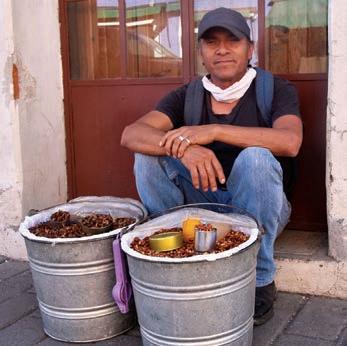
Cacahuates and Chapulines
Makes sense, right? So, I went in and ordered two. Big mistake. Turns out tortas are large sandwiches. Although torta is a generic name for any kind of sandwich, in Mexico City there are torta stands everywhere selling tortas filled with meat, cheese, avocado, onion, refritos and mayonnaise. My favorite is torta suisa, which is made with three kinds of melted cheese. Adding chipotle takes it to whole ‘nother level. CEMITAS A sandwich found only in Puebla, it’s made with a roll called a cemita and generally has meat, queso Oaxaca, avocado and onions—but each stand has its own version. BARBACOA Meat is traditionally, but not always, placed on top of charcoal in a hole in the ground and covered with maguey leaves. It cooks for 8 to 12 hours and, at least for estilo Hidalgo (Hidalgo-style) preparations, is served with a soup made with the meat drippings, rice, garbanzos and carrots. I was told the soup was “90 percent vegetarian.” Unlike barbecue in the U.S., no sauce is added.
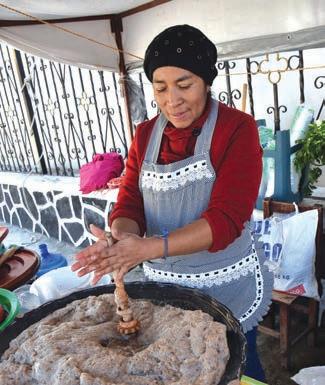

Papas
SNACK ATTACK
ESQUITES Made from fresh corn kernels, this is a simple but delicious snack that’s either fried (with poblano chile, epazote and salt) or boiled (no chile). Both are traditionally served topped with cojita cheese, chile powder, mayonnaise and lime.
CACAHUATES Y CHAPULINES
Vendors called itinerantes carry buckets of peanuts and fried grasshoppers through the streets of cities and pueblos. I’m really fond of the peanuts but have yet to try the chapulines. I’m told they taste like peanuts, so I’ve decided to stick to the peanuts. CHICHARRÓNES Deep-fried pork skins…need I say more? HELADO Y NIEVE Ice cream and water ice made fresh in buckets at stands that line many streets. PAPAS Once you’ve eaten fresh-cooked potato chips, you’ll never buy bagged chips again. Potatoes are sliced into hot oil, cooked for about three minutes, drained, cooled and bagged. Adding salsa, lime and salt is a must.

A steet tortas stand
DRINK UP
JUGOS Stands sell fruit and vegetable juices (fruit juices are called aguas frescas). They’ll often also sell horchata (a sweet rice drink) and jamaica (made from hibiscus flowers). TEPACHE Also called pineapple wine, it’s a slightly alcoholic (about 2 percent) drink made from pineapple peels. The peels are placed in water, along with sugar and cinnamon and allowed to ferment for two or three days. The result is a deep reddish-brown drink that’s somehow able to taste sweet and vinegary at the same time. It’s traditionally served ice-cold. PULQUE Another fermented, slightly alcoholic drink (around 4 percent) that’s made from agave. CHILE ATOLE One of my favorite drinks, this is made by mixing masa with water and boiling that mixture with corn kernels, chile (usually serrano) and epazote. Some cooks add radish leaves. This green, spicy drink is really good during the colder months. ATOLE Often sold at tamale stands, this sweet drink is made with masa, milk, piloncillo (raw sugar) and cinnamon. There’s also a chocolate version. CACAO Known as tejate in Oaxaca and chilate in Guerrero, this cold, delicious chocolate drink is simply known as cacao in Santa Maria Tonantzintla, Puebla where it’s made with cacao, toasted corn, amaranto and cinnamon. The drink is stirred with a special, elaborately carved stick called a molinillo which is spun between a person’s hands to give the cacao its froth.
See a recipe for Barbacoa on page 54.
Cacao
Tepache








